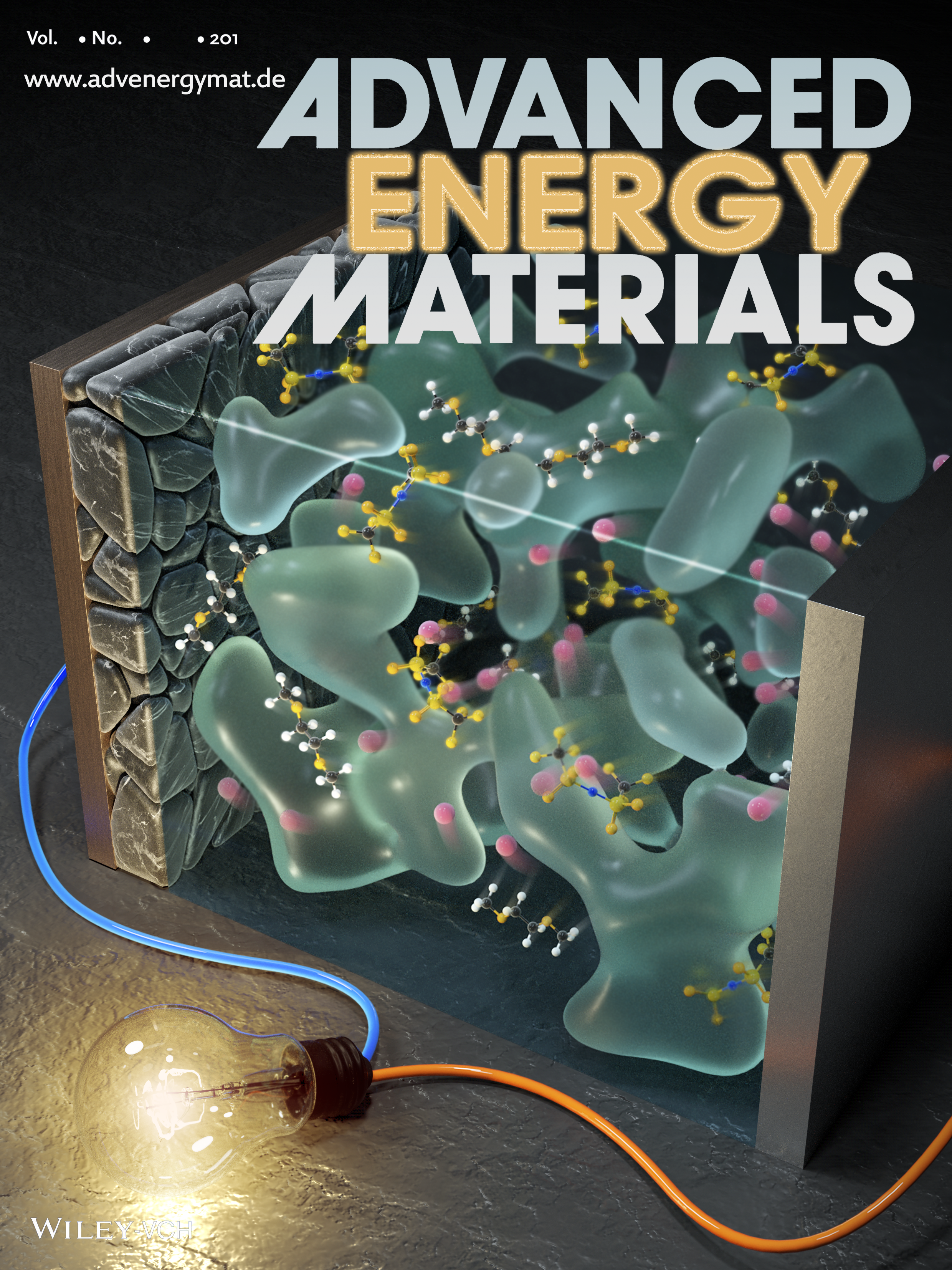
전소연 (제1저자, 박사과정)
Lithium metal batteries (LMBs) have the potential to deliver a greater specific capacity than any commercially used lithium battery. However, excessive dendrite growth and low Coulombic efficiencies (CEs) are major hurdles preventing the commercialization of LMBs. In this study, two different salts, lithium difluorophosphate (LiDFP) and lithium bis(trifluoromethanesulfonyl) imide (LiTFSI), are chosen for use in concentrated electrolytic systems. By mixing salts with vastly different cation–anion interaction energies, the ion solvation structures in the electrolyte can be modulated to enhance the physical/electrochemical properties and suppress Li dendrite growth in LMBs. Among the investigated electrolyte systems, 2.2 m LiDFP + 1.23 m LiTFSI in 1,2-dimethoxyethane is proposed as a highly promising electrolyte system because of its high conductivity (6.57 mS cm−1), CE (98.3%), and the formation of an extremely stable solid–electrolyte interface layer. The bisalt electrolyte presented herein, as well as the associated concepts, provide a new avenue toward commercial LMBs.

(https://doi.org/10.1002/aenm.202003520)



















